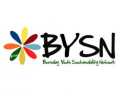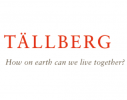Blog Post: QUEST 2014 - From Innovation to Implementation
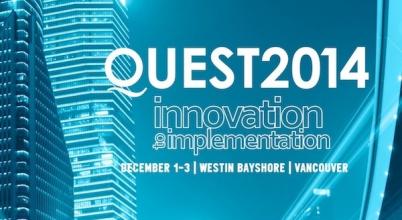
QUEST 2014 - From Innovation to Implementation
QUEST 2014 - From Innovation to Implementation, was an opportunity for conference attendees to view projects, create new partnerships, and connect with world class companies that are leading the development of smart energy communities in Canada and beyond.
The conference was held at the stunning Westin Bayshore in Vancouver, BC and contained numerous panels, interactive roundtables, networking break-out sessions, implementation accelerators, and project showcases featuring real world case studies of sustainability in action.
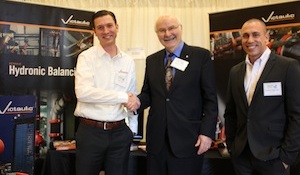
Although the majority of attendees appeared to be Canadian firms, the conference also attracted a number of international companies also operating in the smart city space.
Some of the international countries represented included; the United States of America, the Netherlands, Germany, The United Kingdom, Switzerland and Sweden.
Pictured above: Victaulic Company engineering and sales representatives Mark West and MIchael Digiacomo speak with former British Columbia Premier Michael Harcourt about the benefits of using stainless steel piping in potable water delivery systems.
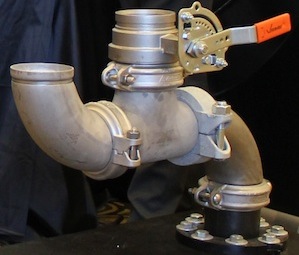
The combination of smart cities, stainless steel piping, Sweden, and the Olympics all have one very interesting smart community in common. Hammarby Sjöstad - Sweden's version of the Vancouver Olympic Village. Although Sweden was not chosen as the host city for the 2004 Summer Olympic Games there is a legacy of the games that makes for an interesting Sustainability story.
The Hammarby Sjöstad community began as a concept of former Stockholm city planner, the late Jan Inge Hagström. During the early 1990’s, Hagström proposed a mixed-use residential neighbourhood for the Hammarby distict which emphasized superior energy efficiency and integrated environmental protection for Hammarby lake and its surrounding lands.
Hammarby Sjöstad is part of the municipality of Stockholm, however little serious thought was given to the development until more than a decade later when it became a strategic asset for Stockholm in its bid for the 2004 Olympics. The pitch to the Olympic committee was to provide the first environmental Olympic village while at the same time showcasing Swedish leadership in community design and environmental performance. (www.hammarbysjostad.se)
Unfortunately for Stockholm the 2004 Summer Olympics were awarded to Athens but the legacy of the Hammarby complex is tremendous and continues to live on. Having visited Hammarby in 2009, I was immediately struck by the depth of thought given to community features; designed to make life more comfortable, livable, cost effective, and environmentally friendly for its inhabitants.
The community’s main environmental goal was a 50% reduction in energy and water usage, and Hagströms integrated community plan called for a closed-loop or circular system with respect to energy, water, and waste resources.
At the heart of the complex of modern buildings and tree-lined Hammarby streets, sits a glass building appropriately named GlashusEtt – Hammarby’s community environmental information centre. There both residents and visitors are able to access real-time information on how the community is performing on its energy and environmental metrics. There are games for kids, information that wows adults, and practical features such as the mobile phone return bin - helping to make sure that the rare earth metals in Hammarby’s mobile phones are a part of Europe's Circular Economy. All of the activities at GlashusEtt serve to educate, engage and reinforce behaviour modification not just on an individual unit basis, but also for the community as a whole.
Another advanced design feature of the Hammarby complex is its garbage vacume collection system. Designed and manufactured by Envac Group, the complex actually has 3 diffrerent pneumatic waste collection systems serving the entire development. Each system has multiple inlets that are positioned conveniently in front of each house and accepts its own specific types of waste including; paper/magazines, garbage and organic waste. Each of the three systems aggregates waste from approximately 2500 households to a central waste repository where it is trucked away for treatment.
The Envac system reports a number of benefits for developers including; increased space available in each individual premises (as there is a reduced need for waste storage on ground floor level, or outside the houses). On average this space savings translates to between 0.5-1m2 per household. As well, the occupants benefit from reduced traffic, noise, and emissions in the residential communities where the systems are installed. The main reason for these reductions is acquired through the vacume tube aggregation of garbage from the entire community to three centrally located collection facilities. This central garbage facility requires only one truck trip a week instead of multiple visits to individual homes or buildings.
Operations manager for Envac Systems Canada Inc. Sean Monclus describes the system as "clean, green and quiet." For more info. on Envac see (video): http://bit.ly/17xHiaZ
Or visit: www.envacgroup.com
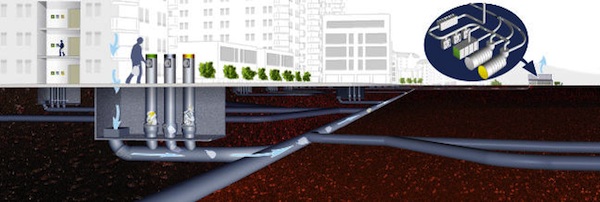
Having seen the Envac system in operation, its inherent logic has been apparent to me since early 2009. What excites me is how this thinking could be easily be applied to many other communities here in North America or elsewhere.
For example, just as Canada Post prepares to adopt community centralized mail delivery, and the beer industry has been licencing production for decades; it seems entirely possible to do the same with our recyclables. Communities could easily centralize recycling returns into a nodal distribution network; requiring fewer truck trips into residential neighbourhoods, reducing costs for communities, pollution, and noise while at the same time increasing traffic safety.
The whole point here is that communities are a huge opportunity to create a more integrated and evolved design approach instead of the alternative, which is all too often a seriously underperforming patchwork of outdated supply and distribution mechanisms.
The Envac logic works especially well in the case of food waste and other green bin yard waste. Clearly, the most sustainable use of food and other organic waste is to compost it on your own property and in doing so receive the benefits of the fresh nutrient rich soil, for your own use. Your plants will thank you for a blanket of leaves and soil to keep them warm in the winter, and they will reward you in the summer with larger fruit, flowers, and green leaves for having the benefit of the additional soil for root growth and nutrient uptake.
The whole concept of “trucking” food waste seems entirely unsustainable, and costly from a number of perspectives. If instead of trucking away food waste and other organics, might it not be a better solution to develop nodal community composting centres instead?
Nodal or decentralized distribution is a basic tenant of Sustainability. The perfect example to conceptualize how this could work would be a cul-de-sac, where the smaller nodal system serves that particular neighbourhood. In the centre of a cul-de-sac there could sit a beautiful park-like space which in it's midst lives the community compost. Compost offers a number of other features in addition to nutrient rich soil, including heat. Here is a great video on what is possible with your own compost: http://bit.ly/13ooGYk
If cities were to set up their own community compost areas in conjuction with community gardens this could be a terrific long-term replicable model for communiites worldwide. Why? Well for starters:
1) Community members would have access to clean soil created in the local community.
2) Depending on the size and number of compost locations this organization could create a number of long-term stable organic agriculture jobs within cities; as either city employees, or perhaps organized as community non-profits. 3) Huge environmental savings; reduced air pollution, noise, and landfill concerns. 4) Financial savings to communities in terms of fuel, and vehicle expenditures. 5) Increased efficiency and community productivity of the road systems by removing vehicles that impede traffic flow. 6) Potential for seriously increased profitability for the waste companies as they will be hauling fully loaded trucks, resulting in less stop/start wear and tear on their vehicles, reduced liability as the company drivers are not put in challenging or difficult maneuvering situations, and they could also potentially bid on the community compost facilities as a contractor. All to say that there are tremendous financial, social, and ecological reasons for adopting new and innovative ways to handling waste streams.
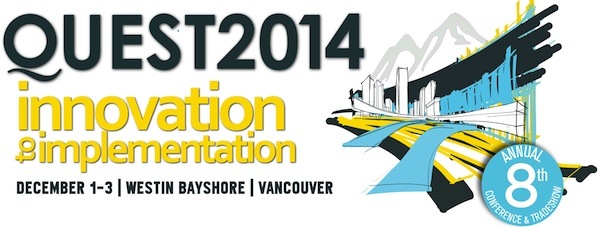
Charting a course for the future
The conference attracted many high profile speakers including; QUEST chair and former BC Premier Michael Harcourt, Ian Gillespie - President of Westbank Projects Corp, and BC Minister of Environment Mary Polak who spoke on the topic of British Columbia: a Leader in Smart Energy Communities.
The luncheon address delivered by Minister Polak encouraged the marriage of business and the environment, highlighting areas for better communication and the facilitation of a deeper understanding of the dynamics of the British Columbia economy. Braving difficult subject matter Minister Polak expounded on the need to strike a balance between economic and environmental considerations and shared the government’s vision for transformation of the BC economy saying:
"We have the choice to be involved,
to drive innovation,
or let other countries do it.
Do we become leaders,
or vacate the field?"
By using some of the provinces vast reserves of LNG as a transition fuel, Minister Polak suggested that the is decision is not simply between right and wrong, but rather a tough decision between right and right with the solution being to "collectively" find the pathway forward.
Project Showcase: Snapshots of Five Innovative Projects that are Driving Smart Energy Communities Forward.
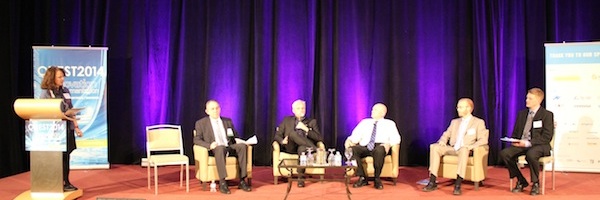
The QUEST Project Showcase segment highlighted real world examples of smart buildings and smart cities. Ranging from tower developments to biomass fueled district energy systems, many BC companies are helping to bring the smart city concept home to Vancouver.
Clint Undseth, VP Corporate Development for Canem Systems was the first Project Showcase panel speaker. A proponent for measuring and demonstrating environmental and profitability improvements Undseth cited reputational brand value studies to back up the assertion that consumers purchase from companies who are both environmental and cost conscious leaders.
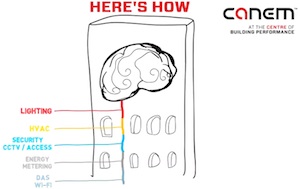
Undseth underscored the value of the Canem Centre for Building Innovation to the industry as a whole saying; "we help construction companies manage “millions of lines of data” and go far beyond the idea of an electrical contractor. We're like the brain for your building; we integrate Information management, building system integration, green data centres, energy management, security & risk management, and lifecycle services into the science of measuring and demonstrating building performance results.
Information analytics are a key component in making information meaningful for project stakeholders. By using the collaborative framework of the Integrated Design Approach, Undseth believes there’s a massive opportunity for industry wide improvement. He says “by using common language and an Integrated Design Process we can bring together systems, people, and processes, to clearly show the financial benefits that accrue to companies willing to adopt this methodology. All-in-all we're able to lower operating costs, improve comfort for building inhabitants which leads to better talent attraction and retention, and superior environmental performance."
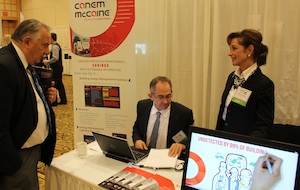
One of Canem’s current projects "Telus Garden" is a LEED Platinum - 22 story office tower, and LEED Gold - 48 story residential tower in downtown Vancouver. Scheduled for completion in 2015, this building is set to seriously outperform the current building stock boasting 10,000 square feet of green roofs, two roof forests, and 80% of primary heating energy coming from the buildings existing systems.
Undseth says; “To accelerate the adoption of Integrated Community Energy Solutions and to establish and realize performance targets, we need corporate stakeholders to align Energy and Environmental Management with Corporate Strategy as opposed to being a support activity.”
Undseth believes that “Sustainability is just SMART BUSINESS” and that breaking through the “We’ve always done it this way” thinking, will lead the Canadian construction industry into a new era of financial and environmental success. For more information on the Canem Centre for Building Innovation see: www.canem.com
The project showcase also saw Arne Sandin, from Bizcat share information on their energy management work in Christchurch, New Zealand: http://bit.ly/1E1nhbe As well as Lynn Meuller from International Wastewater Systems, spoke in detail about his company's sewage heat recovery project at the Richmond Gateway Theatre: http://bit.ly/13TGR9s
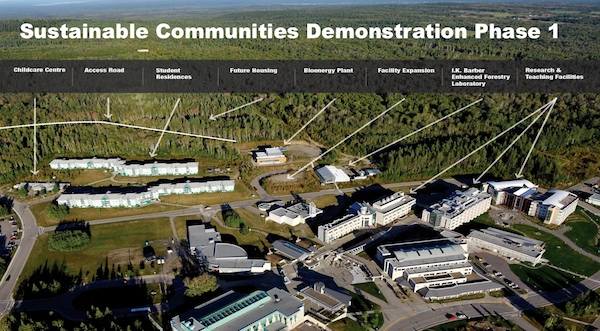
image credit: UNBC.
The first phase of the energy projects helped UNBC earn this recognition; further phases are building on the initiative. First a wood pellet boiler was installed to heat the forestry research centre greenhouse. Students were involved in analysis of “fuel inputs, energy outputs, air emissions and ash generated by the boiler”. The second phase was the installation of a larger version in a district energy system, which was used to heat most of the campus buildings.
UNBC used a Nexterra biomass boiler gasification system, which was able to replace “85% of the natural gas with biomass-based heating”.
According to Claus further research has been done to extend the district heating system to include residences on campus. The residence buildings are currently heated with a combination of electric baseboard heaters and natural gas furnaces. Initial calculations show that approximately 50% of the buildings energy could be supplied by the expansion of the district energy system. For more on UNBC visit: www.unbc.ca
Implementation Accelerators:
Quest 2014 held three Implementation accelerators
Implementing Community Energy Plans
Smart Energy for Northern, Remote, and Rural Communities
Energy Solutions for Existing Building Stock
Gordon Van Tighem, member of NWT Public Utilities Board, and Paul Austin, Regional Director, Partnerships at Sustainable Development Technology Canada ("SDTC") spoke to a crowded room at the Smart Energy for Northern, Remote, and Rural Communities accelerator break-out session.
Van Tighem, gave numerous examples of communities partnering with territorial governments and shared environmental while Paul Austin gave the audience an overview of SDTC; A not-for-profit foundation established in 2001 by the Government of Canada, SDTC fosters "timely diffusion of clean technologies" throught the funding of "innovative products or services that reduce financial and environmental costs while driving better performance." Since its inception SDTC has funded:
a total of 269 Projects
with allocated funds reaching $684M
and 89% of its projects having multiple environmental benfits
Looking for opportunities in Northern latitudes is becoming big business with the onset of climate change and the expanding influence of the Asia Pacific Region. Its is expected that there will be an increased emphasis on arctic sovereignty as shipping and other exploration increases in the region. In fact, it is clear from Austin's slides that there are clear cost and time savings for using Northwest Passage routes instead of the Panama Canal with potential savings valued at an estimated $20B per year.
Tokyo to London
Panama Canal 15,000 miles
Suez Canal 13,000 miles
Northwest Passage 8,500 miles
Northern Sea Route 8,000 miles
Some of the other major opportunities that will exist in Northern communities of the future will likely be found in the provision of the basic necessities of life. Reliable and affordable energy, food, clean water, and basic waste management services are crucial for survival in hostile far North climates. Not surprisingly, one of the recently funded SDTC initiatives is a project called Autonomous Community Solutions ("ACS") - essentially provides all of these community services in a conveniently transportable shipping container.
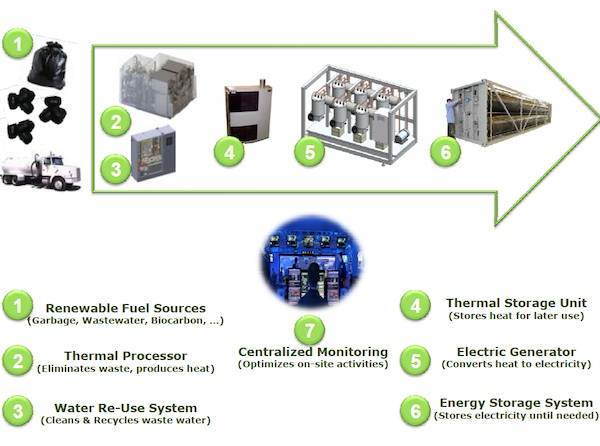
The goal of the project is to produce a portable and modular system capable of heating and cooling, waste management, water treatment, electricity generation and storage that will serve approximately 150 people. Although still in its early stages, this project launched its first demonstration initiative in Cambridge Bay in August of 2014.
If the project proves to work, it may be a valuable community solution for remote Aboriginal communities developed by Aboriginal people. Operational just two days after installation, the ACS-150 provides an architecture that allows other applications like wind, solar, and hydro power to plug into its highly adapatable infrastructure. A great start for what has been defined as a $42B annual market in the provision of these types of services to rural communities.
For more information about SDTC visit: www.sdtc.ca
For more information on QUEST Canada, smart cities, and district energy systems visit: www.questcanada.org
@JasonLRobinson
RELATED LINKS:
IMAGE CREDITS: Spotlight image: Quest Canada 1 - Jason Robinson 2 - Jason Robinson 3 - Envac Group 4 - Quest 5 - Jason Robinson 6 - Canem Systems 7 - Jason Robinson 8 - UNBC 9 - SDTC
Category:


















